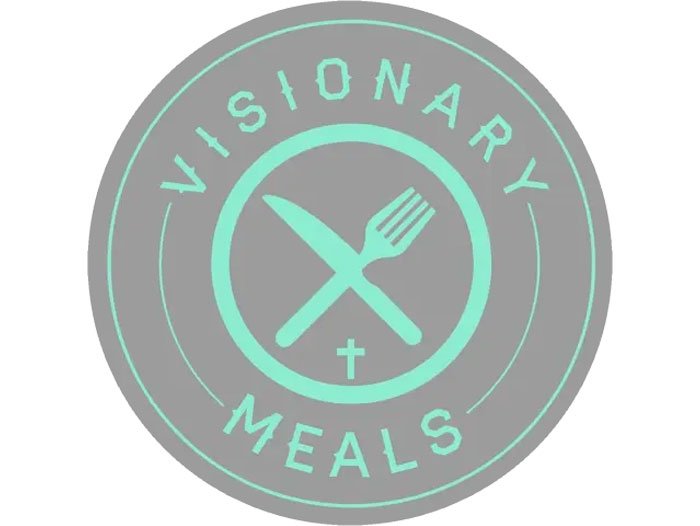MOUNT VERNON — A typical New Year’s resolution is to go to the gym. The older you get, the harder that goal can become.
Knox Pages asked Mount Vernon YMCA staff for tips to stay healthy and mentally well if you’re over 40.
Annette Goeppinger, a fitness class instructor, and Madi Queen, a staff member with expertise in health and wellness, provided their responses via email.
1. What are the most important physical activities for people over 40 to maintain their overall health?
ANSWER: The most important physical activities for people over 40 are some form of aerobic activity and resistance training. Aerobic activity could be walking with friends, playing pickleball, riding a bike or anything that keeps you moving. It helps when you enjoy the activity because that will help you want to continue doing it.
Resistance training such as weight lifting or even bodyweight exercises is also extremely important to maintain overall health. As we age, it gets harder to gain and maintain muscle mass. Therefore incorporating resistance training weekly helps to maintain muscle mass and bone density to issues like osteoporosis in the future.
2. How should people reflect on exercise after turning 40? What changes?
A: Typically, individuals over 40 are not pushing their limits, seeking peak performance or maximum muscle bulk as they might have been earlier in life.
The priorities become joint health, injury prevention, maintaining functional ability, managing stress, boosting energy levels, and slowing the natural decline in muscle mass. They are normally more concerned with staying active and healthy.
3. Are there specific exercises you recommend to prevent common age-related injuries?
A: Strength training is highly beneficial, as it helps maintain muscle mass, improve bone density, and enhance overall physical functionality. As people age, they naturally lose muscle mass, which can lead to weakness and a higher risk of falls and fractures.
Balance exercises, such as single-leg stands or squats, help prevent falls by strengthening the muscles needed to maintain stability, which naturally declines with age, thus improving overall mobility and reducing the risk of injuries from falls or other sudden movements.
4. How often should people over 40 focus on strength training, and what are safe yet effective methods?
A: People over 40 should focus at least two times a week on strength training. Focusing on major muscle groups using weights, resistance bands, or bodyweight exercises is a great place to start to see the benefits.
If you are unsure where to start to ensure proper form and effective strength training, you could hire a certified personal trainer or attend group fitness classes to get the education you need to exercise properly and prevent injury.
5. What role does flexibility play in maintaining mobility and reducing pain as we age?
A: Flexibility allows our joints to move through their full range of motion, which helps prevent muscle tightness, improves posture, reduces the risk of falls, and alleviates joint pain associated with aging.
Flexibility is a critical component of mobility, which also involves strength, balance, and coordination. Poor flexibility affects daily living and the ability to avoid common ailments and injuries often related to aging.
6. What type of cardiovascular exercises are best for heart health after 40?
A: Walking is one of the best cardiovascular exercises for heart health after 40. It can lower blood pressure, improve circulation, and reduce the risk of heart disease. What’s even better about walking, it is a low-cost activity that all people have access to!
7. How does regular physical activity impact mental health and stress levels in people over 40? Are there any benefits?
A: Regular physical activity reduces stress levels, increases energy levels, improves sleep quality, naturally relieves stress by releasing endorphins and helps to manage stress hormones like cortisol.
Exercise can boost your mood, concentration and alertness. It can even boost your mood and help give you a positive outlook on life.
8. Are there specific exercises that are particularly beneficial for mental clarity and reducing anxiety?
A: There is a wide variety of exercises beneficial to mental clarity and reducing anxiety. A few specific examples include walking, running, swimming, dancing, bicycling, playing basketball and weight lifting.
In addition, yoga strengthens parts of the brain that play a key role in memory, attention, and awareness.
9. How can individuals over 40 balance staying active without overtraining or risking injury?
A: As you get older, you should strive to exercise 150 minutes per week, including moderate to high-intensity aerobic workouts and at least two 15-20-minute sessions of strength training.
Compound movements (exercises that work several joints and muscle groups at once) are very beneficial and should be used more often than, or along with, isolated exercises such as a bicep curl.
A workout plan that allows for slow progression, increasing weight and/or repetitions over a period of time, will help reduce muscle injuries. As always, proper control, form and alignment when performing any exercise is imperative in preventing injuries.
10. What are the best strategies for improving recovery time and reducing soreness after workouts after 40?
A: The best strategy for improving recovery time and reducing soreness after workouts is refueling your body with proper nutrition. This includes consuming protein-rich foods, drinking plenty of water and including carbohydrates and healthy fats after your workout.
It is also important to include stretching before and after your workout to help reduce muscle tightness.
11. How important is nutrition in having solid mental health and exercise after 40 years old?
A: Nutrition plays a vital role in maintaining solid mental health. Nutrients like omega-3 fatty acids, antioxidants, vitamins and minerals are essential for brain health. Proper nutrition also helps with mood regulation, stress management and energy levels.
A balanced diet provides the necessary energy and nutrients to help muscle recovery and enhance exercise performance. Both will help you have more effective workouts and better results.
12. How can someone who has been mostly sedentary until their 40s ease into an active lifestyle?
A: Break up sedentary time each hour by walking. Start with short intervals and increase the intervals and speed slowly over time. Simple exercises such as standing from a seated position, increase the number of repetitions.
Weight training or resistance training, using a light weight and low repetitions, increasing slowly over time.
13. What role does sleep play in maintaining an active and healthy lifestyle after 40?
A: Sleep is one of the most underrated factors in maintaining a healthy lifestyle. If you aren’t sleeping enough, it can be hard to eat well and motivate yourself to exercise. According to the National Sleep Foundation, adults between 25 and 64 years of age need an average of 7 to 9 hours of sleep per night.
So getting enough sleep (7-9 hours) can help improve many areas of your life. It can help your mental sharpness as you age, regulate appetite and metabolism and help with your hormones as well.
If you don’t get an adequate amount of sleep every night, it can lead to anxiety, depression, hunger and cravings, a poor immune system and so much more. So one of the best things you can do is turn the TV off, put your phone down close your eyes and get more sleep at night.
14. Can you share examples of clients over 40 who have successfully improved their fitness and overall well-being?
A: I currently have a 58-year-old client who needed a double knee replacement but wanted to lose weight and gain strength before the surgeries. In 10 months she lost 42 pounds, lost 8″ in her waist, and 7″ in her hips, and she is down numerous clothes sizes. She says she has improved her sleep psyche and better coping skills.
All of this is a result of her improved diet and consistency in working out. She began taking group classes, which included strength training, cardio, and stretching, modifying most of the exercises.
In the beginning, she was unable to go from lying down to standing, unassisted. She modified planks and floor exercises by using the wall or an elevated surface, as opposed to going to the floor.
In 10 months she was able to gain enough strength to get up from the floor and easily transition from seated to standing unassisted.
When it was time to replace her first knee, she gained enough strength in her legs and core to allow her to lift her leg without assistance and exceeded the goals of her surgeon and physical therapist in her recovery.
Her second knee surgery was just as successful, and she is continuing with her fitness journey today, maintaining her weight and new-found strength.


This independent, local reporting provided by our Report for America Corps members is brought to you in part by the generous support of the Knox County Foundation and Kokosing.

















